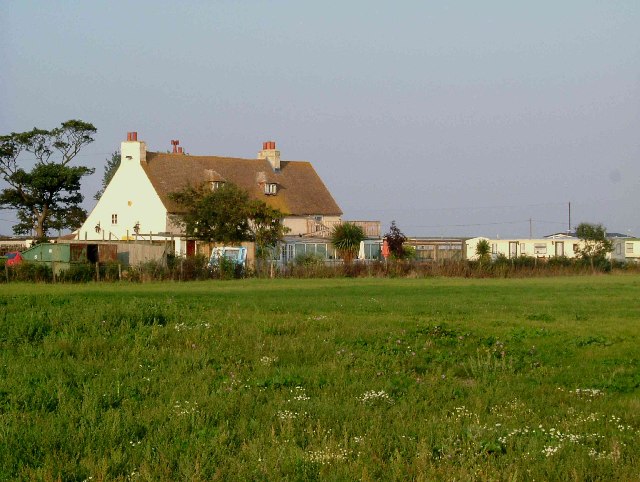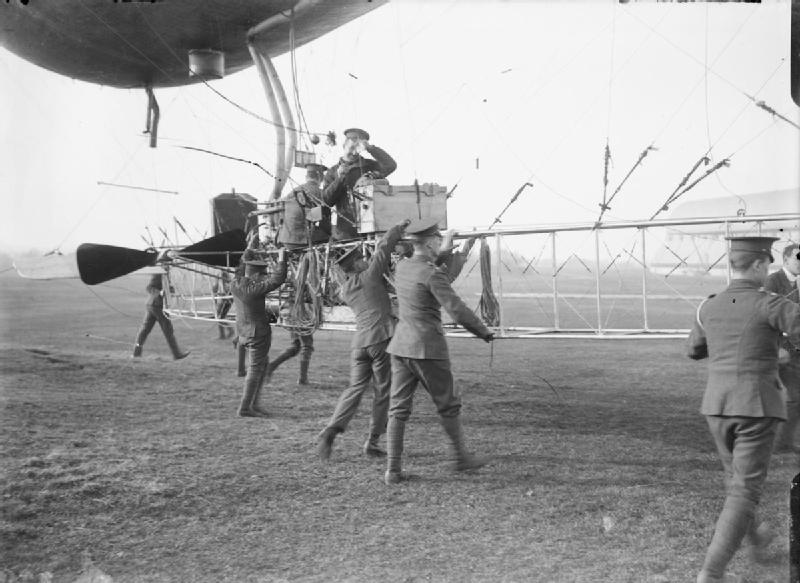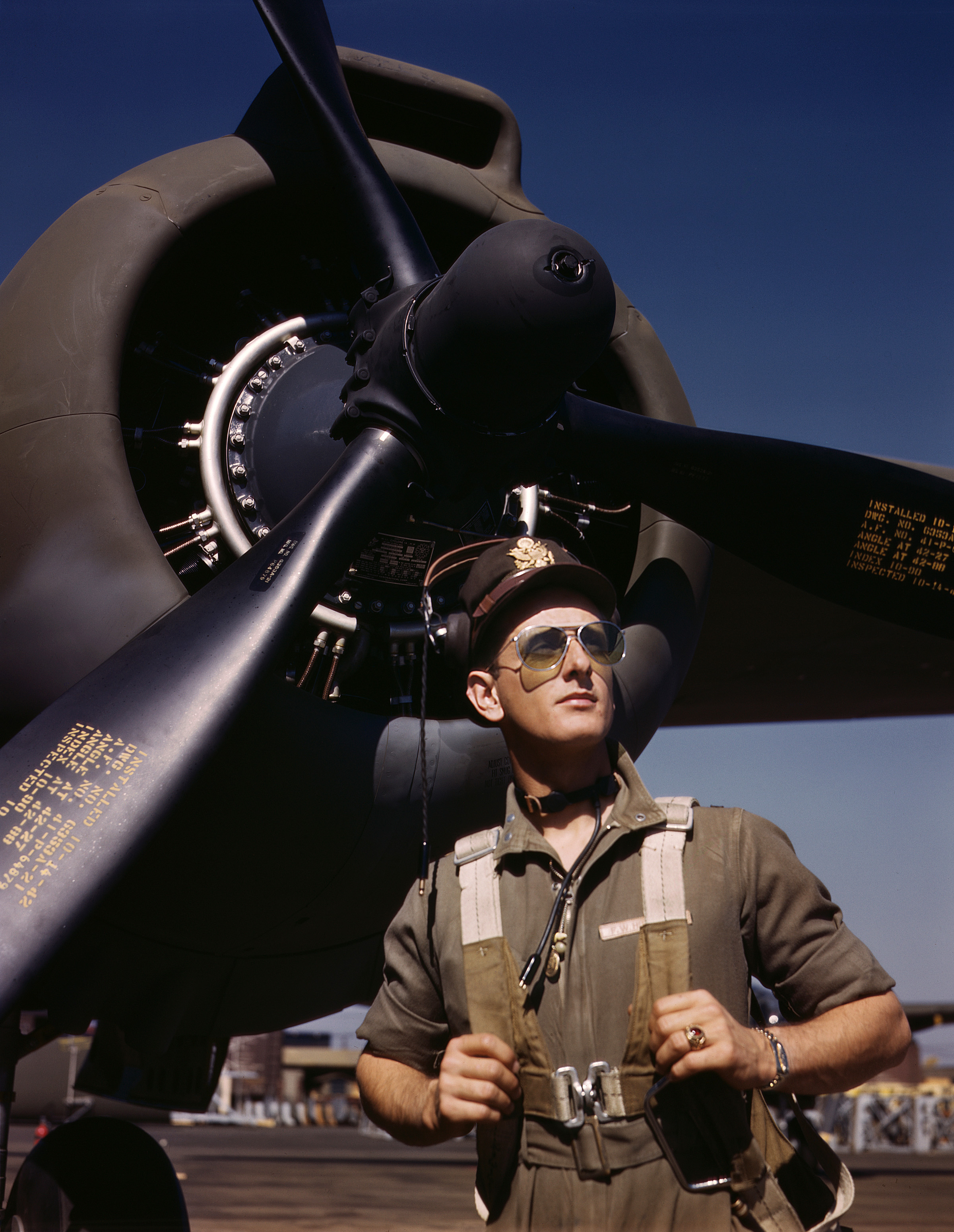|
L. A. Strange
Louis Arbon Strange, (27 July 1891 – 15 November 1966) was an English aviator, who served in both the First and Second World Wars. Early life Louis Strange was born in Tarrant Keyneston, Dorset, and was educated at St Edward's School, Oxford, joining the school's contingent of the Dorset Yeomanry. Strange spent his childhood at Tarrant Keynstone Mill on the River Stour. His family farmed at Spetisbury in Dorset. He had seen military aircraft and the airship Beta flying over Dorset during the summer manoeuvres of 1912 when serving with the Dorsetshire Yeomanry and determined in May 1913 to become a pilot. He joined the Ewen School of flying at Hendon Aerodrome in July and gained his Royal Aero Club Aviators' Certificate, No. 575, on 5 August. On 8 October 1913 he was commissioned as a second lieutenant (on probation) in the Royal Flying Corps (Special Reserve). Just after obtaining his licence he won his first cross-country race and then won the Hendon March Meeting rac ... [...More Info...] [...Related Items...] OR: [Wikipedia] [Google] [Baidu] |
Tarrant Keyneston
Tarrant Keyneston is a village and civil parish in Dorset, England. It is situated in the Tarrant Valley, southeast of Blandford Forum. In the 2011 census the parish had 152 dwellings, 145 households and a population of 310. On the hills northwest of the village are the earthworks of Buzbury Rings (or Busbury Rings), the remains of an Iron Age and Romano-British fortified encampment or settlement, described by Sir Frederick Treves in 1905 as "a circle of entrenchments, composed of a stout vallum and a ditch". The outer enclosure covers about and within this is an inner enclosure, covering about , which is the location of most of the finds from the site, including Roman pottery, animal bones and daub imprinted by wattles. The site has been much damaged by ploughing and by the road between Wimborne Minster and Blandford Forum, which crosses the site. The village's parish church has a 15th-century tower, though the rest of the building was rebuilt in 1852 by Thomas Henry Wyatt ... [...More Info...] [...Related Items...] OR: [Wikipedia] [Google] [Baidu] |
Distinguished Flying Cross (United Kingdom)
The Distinguished Flying Cross (DFC) is the third-level military decoration awarded to officers, and since 1993 to other ranks, of the United Kingdom's Royal Air Force and other British Armed Forces, services, and formerly to officers of other Commonwealth of Nations, Commonwealth countries, for "an act or acts of valour, courage or devotion to duty whilst flying in active operations against the enemy". History The award was established on 3 June 1918, shortly after the formation of the Royal Air Force (RAF), with the Royal Warrant published on 5 December 1919. It was originally awarded to RAF Officer (armed forces), commissioned and warrant officers, including officers in Commonwealth and allied forces. In March 1941 eligibility was extended to Naval Officers of the Fleet Air Arm, and in November 1942 to Army officers, including Royal Artillery officers serving on attachment to the RAF as pilots-cum-artillery observers. Posthumous awards were permitted from 1979. Since 1993 r ... [...More Info...] [...Related Items...] OR: [Wikipedia] [Google] [Baidu] |
Royal Flying Corps
The Royal Flying Corps (RFC) was the air arm of the British Army before and during the First World War until it merged with the Royal Naval Air Service on 1 April 1918 to form the Royal Air Force. During the early part of the war, the RFC supported the British Army by artillery co-operation and photographic reconnaissance. This work gradually led RFC pilots into aerial battles with German pilots and later in the war included the strafing of enemy infantry and emplacements, the bombing of German military airfields and later the strategic bombing of German industrial and transport facilities. At the start of World War I the RFC, commanded by Brigadier-General Sir David Henderson, consisted of five squadrons – one observation balloon squadron (RFC No 1 Squadron) and four aeroplane squadrons. These were first used for aerial spotting on 13 September 1914 but only became efficient when they perfected the use of wireless communication at Aubers Ridge on 9 May 1915. Ae ... [...More Info...] [...Related Items...] OR: [Wikipedia] [Google] [Baidu] |
Royal Aero Club
The Royal Aero Club (RAeC) is the national co-ordinating body for air sport in the United Kingdom. It was founded in 1901 as the Aero Club of Great Britain, being granted the title of the "Royal Aero Club" in 1910. History The Aero Club was founded in 1901 by Frank Hedges Butler, his daughter Vera and the Hon Charles Rolls (one of the founders of Rolls-Royce Limited, Rolls-Royce), partly inspired by the Aéro-Club de France, Aero Club of France. It was initially concerned more with Balloon (aircraft), ballooning but after the demonstrations of heavier-than-air flight made by the Wright Brothers in France in 1908, it embraced the aeroplane. The original club constitution declared that it was dedicated to 'the encouragement of aero auto-mobilism and ballooning as a sport.' As founded, it was primarily a London gentlemen's club (traditional), gentlemen's club, but gradually moved on to a more regulatory role. It had a clubhouse at 119 Piccadilly, which it retained until 1961.Anthony ... [...More Info...] [...Related Items...] OR: [Wikipedia] [Google] [Baidu] |
Hendon Aerodrome
Hendon Aerodrome was an aerodrome in London, England, that was an important centre for aviation from 1908 to 1968. It was situated in Colindale, north west of Charing Cross. It nearly became a central hub of civil aviation ("the Charing Cross of [the UK's] international air routes"), but for the actions of the RAF after the First World War in reserving it for military aviation. It was known as a place of pioneering experiments including the first airmail, the first parachute descent from a powered aircraft, the first night flights and the first aerial defence of a city. Beginnings Henry Tracey Coxwell, Henry Coxwell and James Glaisher were the first to fly from Hendon in a balloon called the Mammoth in 1862. Ballooning at the Brent Reservoir was a popular spectacle for crowds on bank holidays late in the 19th century. The first powered flight from Hendon was in an long non-rigid airship built by Spencer Brothers of Highbury. It took off from the Welsh Harp Reservoir in 1909, ... [...More Info...] [...Related Items...] OR: [Wikipedia] [Google] [Baidu] |
Dorsetshire Yeomanry
The Queen's Own Dorset Yeomanry was a yeomanry regiment of the British Army founded in 1794 as the Dorsetshire Regiment of Volunteer Yeomanry Cavalry in response to the growing threat of invasion during the Napoleonic wars. It gained its first royal association in 1833 as The Princess Victoria's Regiment of Dorset Yeomanry Cavalry, and its second, in 1843, as the Queen's Own Regiment of Dorset Yeomanry Cavalry. History Formation and early history Under threat of invasion by the French Revolutionary government from 1793, and with insufficient military forces to repulse such an attack, the British government under William Pitt the Younger decided in 1794 to increase the Militia and to form corps of volunteers for the defence of the country. The mounted arm of the volunteers became known as the "Gentlemen and Yeomanry Cavalry". The Dorset Yeomanry was first raised on 9 May 1794 as the Dorsetshire Regiment of Volunteer Yeomanry Cavalry of six troop A troop is a military sub ... [...More Info...] [...Related Items...] OR: [Wikipedia] [Google] [Baidu] |
British Army Airship Beta
The Beta 1 was a non-rigid airship constructed for experimental purposes in the United Kingdom by the Army Balloon Factory in 1910. Reconstructed as Beta II, it was used successfully by the British Army and then by the Royal Naval Air Service as HMA No.17, and was finally struck off charge in 1916. Beta 1 Design and development Beta 1 used the gondola of the British Army Airship No.3 ''Baby'', with a new envelope of rubberised fabric. Rectangular horizontal stabilisers were fitted either side of the tail together with a fixed fin with a rudder mounted on the trailing edge below the tail. A long uncovered framework suspended below the envelope held the 35 hp Green water-cooled engine, which drove a pair of 5 ft 9 in (1.75 m) diameter two-bladed propellers. An elevator was mounted on the front of this structure to provide pitch control. As first built, the engine drove a pair of propellers which could be swivelled to provide vectored thrust, but thi ... [...More Info...] [...Related Items...] OR: [Wikipedia] [Google] [Baidu] |
Spetisbury
Spetisbury () is a village and Civil parishes in England, civil parish in north Dorset, England, situated on the River Stour, Dorset, River Stour and the A350 road, A350, southeast of Blandford Forum. According to the Domesday Book of 1086, the village had 30 households. According to the United Kingdom Census 2011, 2011 census the parish had 224 households and a population of 555. According to the United Kingdom Census 2021, 2021 census, the parish had 250 households and a population of 590. Spetisbury is a linear settlement, adjacent to the A350 road, which was included in Dorset County Council's response to the Major Roads Network (MRN) consultation, leading to some anticipation of a bypass of Spetisbury and neighbouring Charlton Marshall. A large solar farm was commissioned near Spetisbury in 2023 to provide energy for the City of London Corporation. Spetisbury is twinned with Le Vast, a village in the Manche Departments of France, department of Normandy, France. The Manche ... [...More Info...] [...Related Items...] OR: [Wikipedia] [Google] [Baidu] |
River Stour, Dorset
The River Stour is a river which flows through Wiltshire and Dorset in southern England, and drains into the English Channel. The catchment area for the river and its tributaries is listed as . Toponymy It is sometimes called the Dorset Stour to distinguish it from other rivers of the same name in Kent, Suffolk and the Midlands. According to Brewer's ''Dictionary of Britain & Ireland'', the name Stour rhymes with ''hour'' and derives from Old English meaning "violent", "fierce" or the "fierce one". History The river burst its banks at Christchurch during the 2013–14 winter floods and 100 residents were evacuated. Prehistoric archaeology The Stour valley has produced rich evidence for early human (Palaeolithic) activity. Gravel pits in the lower reaches of the river (many underlying modern day Bournemouth) produced hundreds of Lower Palaeolithic handaxes when they were quarried, particular during the late 19th century and the first half of the 20th century. Archaeologic ... [...More Info...] [...Related Items...] OR: [Wikipedia] [Google] [Baidu] |
Oxford
Oxford () is a City status in the United Kingdom, cathedral city and non-metropolitan district in Oxfordshire, England, of which it is the county town. The city is home to the University of Oxford, the List of oldest universities in continuous operation, oldest university in the English-speaking world; it has buildings in every style of Architecture of England, English architecture since late History of Anglo-Saxon England, Anglo-Saxon. Oxford's industries include motor manufacturing, education, publishing, science, and information technologies. Founded in the 8th century, it was granted city status in 1542. The city is located at the confluence of the rivers Thames (locally known as the Isis) and River Cherwell, Cherwell. It had a population of in . It is north-west of London, south-east of Birmingham and north-east of Bristol. History The history of Oxford in England dates back to its original settlement in the History of Anglo-Saxon England, Saxon period. The name � ... [...More Info...] [...Related Items...] OR: [Wikipedia] [Google] [Baidu] |
St Edward's School, Oxford
St Edward's School is a public school (English fee-charging boarding and day school) in Oxford, England. It is known informally as 'Teddies'. Approximately sixty pupils live in each of its thirteen houses. The school is a member of the Rugby Group, the Headmasters' and Headmistresses' Conference, and the Oxfordshire Independent and State School Partnership. Termly fees in 2024/2025 are £15,906 (+ VAT) for boarding and £12,725 (+ VAT) for day pupils. The school is also affiliated to the Church of England. The school teaches the GCSE, A Level and International Baccalaureate (IB) qualifications. The sixth form is split evenly between pupils studying A Levels and the IB Diploma. History The school was founded in 1863 by Thomas Chamberlain, student of Christ Church, Oxford, and vicar of St Thomas the Martyr's Church, Oxford. The school carries the name of St Edward the Martyr, King of England from 975 to 978. The original school building was Mackworth Hall, which at that ti ... [...More Info...] [...Related Items...] OR: [Wikipedia] [Google] [Baidu] |
Aviator
An aircraft pilot or aviator is a person who controls the flight of an aircraft by operating its directional flight controls. Some other aircrew members, such as navigators or flight engineers, are also considered aviators because they are involved in operating the aircraft's navigation and engine systems. Other aircrew members, such as drone operators, flight attendants, mechanics and ground crew, are not classified as aviators. In recognition of the pilots' qualifications and responsibilities, most militaries and many airlines worldwide award aviator badges to their pilots. Definition The first recorded use of the term ''aviator'' (''aviateur'' in French) was in 1887, as a variation of ''aviation'', from the Latin ''avis'' (meaning ''bird''), coined in 1863 by in ''Aviation Ou Navigation Aérienne'' ("Aviation or Air Navigation"). The term ''aviatrix'' (''aviatrice'' in French), now archaic, was formerly used for a female pilot. The term ''aviator'' (''aviateur'' ... [...More Info...] [...Related Items...] OR: [Wikipedia] [Google] [Baidu] |








